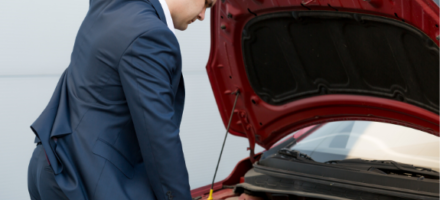
Wondering which baby or child car seat is the best buy? There are many things to consider, besides price, including car compatibility, age suitability and additional features such as ISOfix and swivel action.
Here we take a look at the various considerations to make when choosing the best car seat for you and your family.
Information correct as of December 2019.
Which baby or child car seat do I need?
1. Car Seat Group
All children aged 0-12 (or until they are 135cm tall, whichever is soonest) are required by law to use a car seat when travelling.
There are therefore various car seats designed to protect children at various stages of their development – categorised into groups of car seat based on age.
While the car seat you have will need to be updated as your child grows, there are also combination Group 1/2/3 seats available, which can be used from nine months all the way up to 12 years (9-36kg).
Here is a chart to help track which is most suitable car seat for your child (most accurately assessed by weight and not age).
|
Group |
Weight |
Approx. age |
|
0 |
birth up to 10kg/22lb |
birth up to 6-9 months |
|
0+ |
birth up to 13kg/29lb |
birth up to 12-15 months |
|
0+ & 1 |
birth up to 18kg/40lb |
birth to up to about 4 years |
|
1 |
9-18kg/20-40lb |
about 9 months to 4 years |
|
1 & 2 |
9-25kg/20-55lb |
about 9 months to 6 years |
|
2 |
15-25kg/33-55lb |
about 4 to 6 years |
|
1, 2, 3 |
9-36kg/20-79lb |
about 9 months to 12 years |
|
2 & 3 |
15-36kg/33-79lb |
about 4-12 years |
2. i-size Fit For Your Car
Aside from Groups of car seats, there are also i-size measurements for some car seat brands. I-sizer is an EU safety regulation for child car seats (ECE R129). UK legislation has now been amended to allow i-size seats to be used in the UK and will run side by side with the existing R44.04 standard.
i-size car seats do however require your car to have a ISOfix fitting point – so be sure to check your car manufacturer is suitable for these types of child car seats on the market.
4. What Is An ISOfix Car Seat?
ISOfix provides an easy and secure way to attach your child’s car seat. With no need for seat belts to secure the base, fitting points are built into car seats to allow your child car seats to be plugged into place – preventing the car from rotating and tilting upon impact.
If your car has ISOfix capability (check your vehicle handbook), you will be able to look for a child car seat with ISOfix. Always ask the car seat retailer to find and check suitability for ISOfix ready seats too.
5. Latest Safety Standards
All car seats should meet the United Nations standard Regulation 44.04 or the i-size standard (R129). Look for the 'E' mark, on any car seat you are considering, before purchase, especially in older models.
6. Swivel Car Seat
Having a swivel feature, where the car seat can be rotated on the base towards, can be very handy when manoeuvring a baby or toddler in and out of a car – to save your back!
Other car seats have a swivel base to make it easier to switch between forward-facing and rear-facing. It is advised to remain rear-facing for as long as possible.
7. Toddler & Older Children Car Seat
You should let your child reach the top limit of each group car seat before advancing to the next stage for maximum protection during impact.
In general, your child will have outgrown a car seat if his or her eyes are level with the top of the seat when sitting in it. In most cases, a child will reach the weight limit of a child car seat before becoming too tall for it, but all babies and children are different.
8. How Much Should I Spend?
Working out how much you wish to spend on a new car seat will depend on your preference for features such as ISOfix, swivel functionality and combined group adaptability. However, while a Group 0,1,2,3 may seem like an expensive investment, there will be no need to replace the car seat every couple of years as you child grows.
9. Second Hand Car Seat Considerations
There are numerous market places available online where you may be tempted to buy a second hand car seat at a reduced cost of a brand new one.
Be careful when considering second hand car seats as they may well have been involved in an accident, but the damage may not be visible. Also make sure that they are up to current safety standards, as older seats may not be up to scratch or are likely to have been subject to heavy wear and tear. Buying or accepting a second-hand car seat from a family or friend that you can trust is a safer way to obtain a more affordable car seat.
We hope this guide has helped identify the key considerations when choosing your child’s car seat. Above all else the most important thing to always consider is safety. The safer the child the less the risk and that’s always the deciding factor for any parent.




